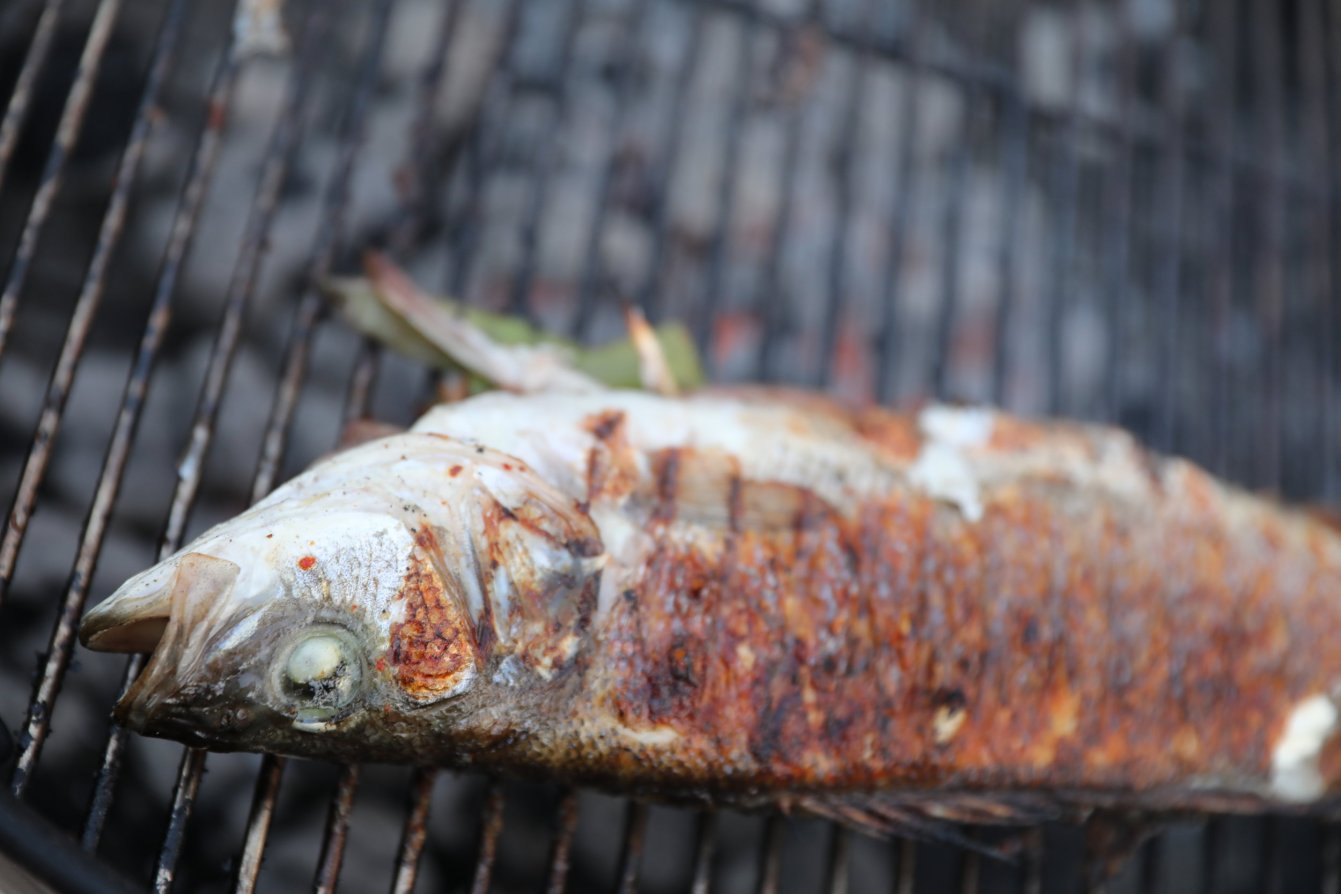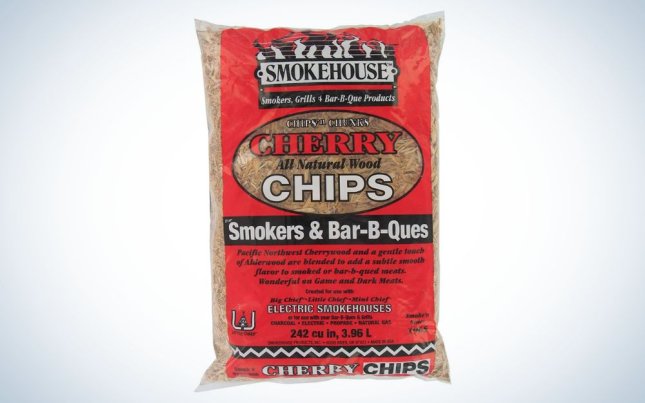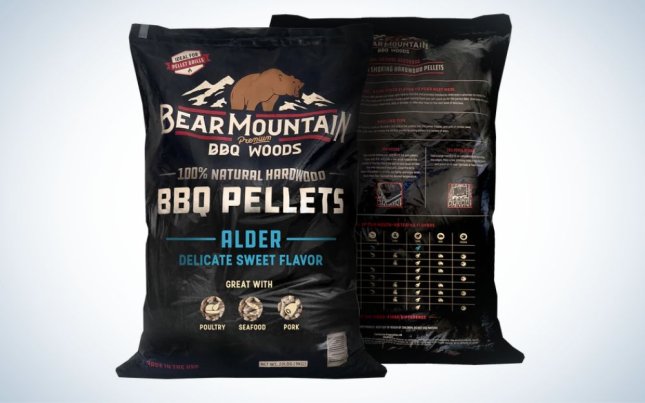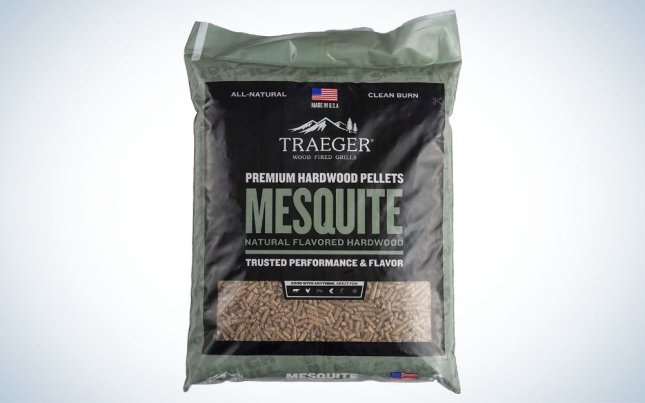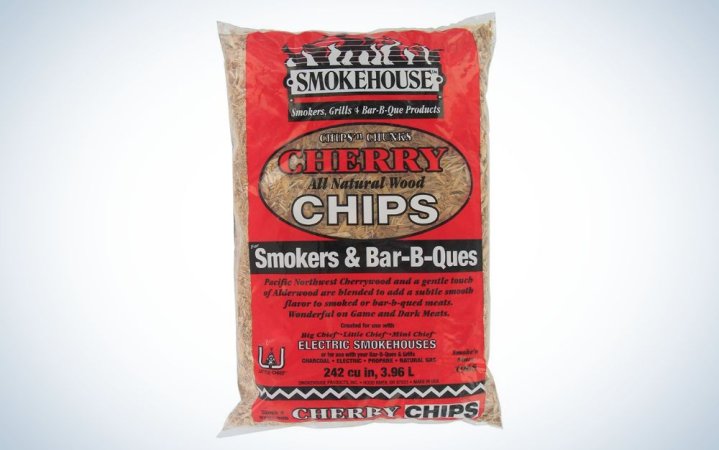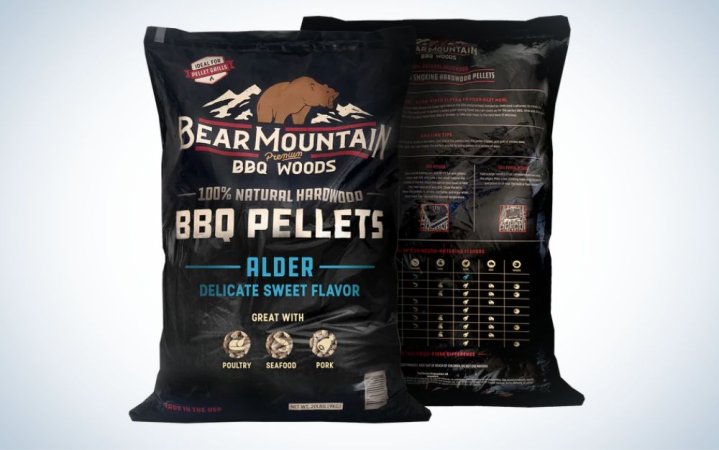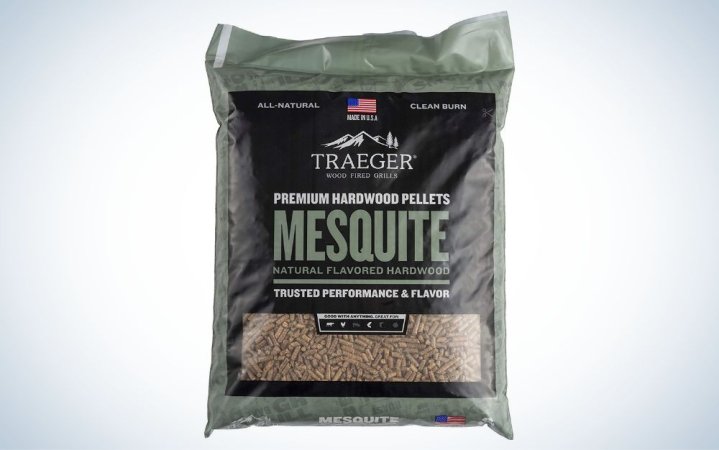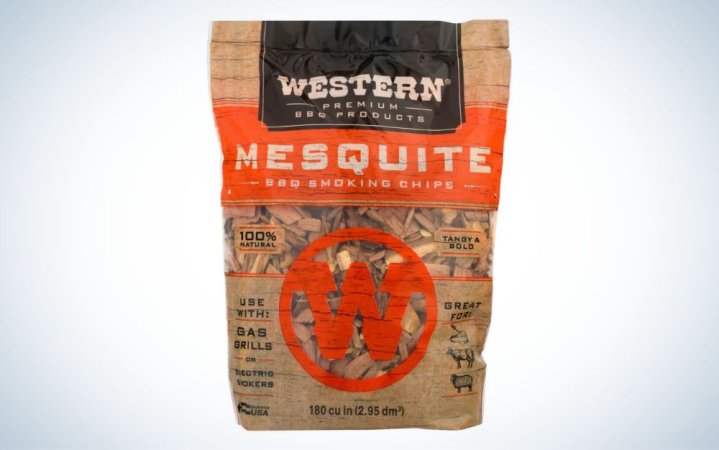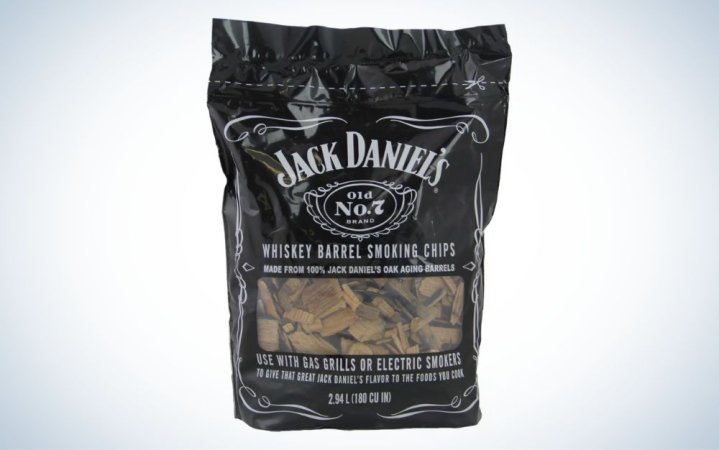We may earn revenue from the products available on this page and participate in affiliate programs. Learn More ›
Summer is a time for catching fish, filleting fish, and eating fish in any of its countless ways. Though if I’m honest, every season is a time for catching and eating fish. Even as the catch-and-release mantra holds tight with fly anglers in particular, plenty of biologists and fisheries managers are allowing, or even encouraging, anglers to just take home their limit of fish. And when you have that limit of trout, perch, walleye, salmon, or whatever species you were seeking, it’s time for the next best part after fishing: Cooking. While I certainly won’t criticize a good shore lunch, smoked fish has to be one of the best and most versatile ways to cook fish. And to achieve perfect smoked fish, you need the right wood. With the help of award-winning chef, Hank Shaw, I put together recommendations for the best wood for smoking fish.
- Best for Cold Smoking: Smokehouse All Natural Cherry Wood Smoking Chips
- Best for Salmon: Bear Mountain Premium BBQ Pellets – Alder
- Best for Mexican Recipes: Traeger Premium Hardwood Wood Pellets – Mesquite
- Best for Mountain Whitefish: Western Premium BBQ Smoking Chips – Maple
- Best for White Fish: Jack Daniel’s Wood Smoking Chips – Oak
How to Choose the Right Kind of Wood
Instead of thinking about fish as individual species and wondering what woods to use with salmon, perch or trout, group them by the general color of their meat.
Consider fish in three basic groups: orange fish, grey or blue fish and white fish. Orange fish are salmon and trout. Grey fish are species like yellowtail, tuna, sardines or herring, and white fish like halibut or catfish. The blue or grey fish can take much stronger wood smoke for much longer than the white or orange-colored fish.
If you’re not sure, start with a more mild wood such as one of the fruit woods or oak, and err on the side of too little smoke versus too much. A piece of fish with less smoke than you want will still taste like a great piece of fish. A piece of fish with too much smoke can be downright inedible.
You can also consider what woods have been culturally associated with different species of fish. Cedar, for example, is rarely if ever used with fish outside of the Pacific Northwest where it’s often used (carefully) to smoke salmon. Floridians will use hickory to smoke mullet and mix it with mayonnaise and cream cheese for a unique-tasting dip.
Best for Cold Smoking: Smokehouse All Natural Cherry Wood Smoking Chips
Best for Cold Smoking
Key Features
- Only pure hardwood
- Blend of cherry and alder wood for easy flavor
- Small chips
- Works in any cold smoker
Why It Made the Cut
If you want a fully-cured fish that tastes like something you’d buy in a European meat shop, use a fruit wood such as cherry for your cold-smoked fish.
Pros
- Sweet
- Produces plenty of smoke
Cons
- Possible to overdue if you let it smoke too long
Product Description
Cold smoked fish, done properly, is essentially shelf stable, Shaw says. It’s traditionally dry soaked until the moisture is gone and then hung in a smokehouse for a certain number of hours each day over the course of a week. Cold smoking is never done over 85 degrees Fahrenheit, and it’s often as low as 50 degrees.
“Salt or sugar is used as a cure,” Shaw says. “Both salt and sugar will pull moisture out of something, which is why you can have a jar of jelly for years and it’s still fine.”
That’s why the fish ends up firm enough to slice and place on crackers or a bagel. The brine also ends up making the fish quite salty, so plan to eat it cold. “When you eat something cold, your perception of its saltiness goes way down,” he says. “If you heat it up it will be too salty, but eat it cold or cool, and it will be quite nice.” You also won’t be chunking it up and eating it with a fork like you would a piece of grilled fish. Instead, slice it thin and use it with something else.
As for smoking, Shaw recommends cold smoking with something delicate like fruit woods. If you want to do it yourself, collect some downed fruit wood and make it into wood chips that can be used in your smoker. Why fruit? Because smoked fish, with the salty, flavorful brine needs no more than a kiss of smoke with some flavor in it. Something like mesquite or hickory can overpower the fish, especially when cold smoked for a long period of time.
If you don’t have access to a smokehouse—and most of us don’t have access to smokehouses—you can also use a cold smoker like a Big Chief or Little Chief. Cure it for several days, then smoke it for three to four hours a day for five or six days, keeping it in the refrigerator when it’s not being smoked. It will ultimately get to a point where the color has changed and it’s sliceable.
To be safe, store it in the refrigerator or freezer. The only exception to alder or willow that Shaw knows is a cold-smoked fish found in Scotland called Finnan Haddie. It’s haddock smoked over green wood and peat. The taste is distinct, and peat is not delicate, but it’s worth trying if you ever end up in Scotland.
Best for Salmon: Bear Mountain Premium BBQ Pellets – Alder
Best for Salmon
Key Features
- Perfect amount of smokiness
- Pellets work in pellet smokers and other grills
- 100% hardwoods
Why It Made the Cut
There’s no better wood for smoking salmon than alder, and Bear Mountain makes some of the best wood pellets.
Pros
- Perfect flavor
- Works on salmon and most other fish species
- Delicate so won’t overpower your fish
Cons
- Pricier than DIY harvesting
Product Description
This one isn’t tricky. If you’re smoking salmon, use alder. Now you may have used a different kind of wood, perhaps mesquite or hickory, and if you like it, there’s no judgment. But alder is universally the best wood for the fish. “Wood in general adds a layer of flavor to whatever is smoking,” Shaw says. “And that can be either delicate or a sledgehammer. Hickory is a sledgehammer. Alder is a paintbrush.”
With salmon, you want a paintbrush.
Alder is also ideal because it’s widely available in nature – it actually grows across the globe from Alaska and California to Europe and Siberia. “Chances are there’s one near you.” Willow is also a good option if you want to harvest it yourself. It’s also easy to buy as briquettes, pellets and chips. We like the Bear Mountain wood pellets for using in the best pellet smokers. They smoke and burn cleanly and provide the perfect flavor. But if you don’t have a pellet grill, go ahead and collect some alder for your smoker for the most affordable option.
Best for Mexican Recipes: Traeger Premium Hardwood Wood Pellets – Mesquite
Best for Mexican Recipes
Key Features
- 100% hardwood
- Created by Traeger for Traeger smokers
- Produces 8500 BTUs per pound of pellets
Why It Made the Cut
Big, dense pieces of ocean fish require a heavy smoke best offered by woods like mesquite or oak.
Pros
- Consistent mesquite flavor
- Reliable mix of hardwoods for the best smoke
- No filler or bark content
Cons
- More expensive than some counterparts
Product Description
You don’t have to be in Baja Mexico to taste the delicious flavors of smoked fish straight from the ocean. And seasoning then smoking fish like marlin, swordfish, yellowtail or tuna is a perfect addition to your seafood repertoire. The best woods are manzanita, oak or mesquite, though some come with caveats. Manzanita, if you can find it, will be the most mild but also burns “really hot.” “You have to be really careful,” he says. “If you get manzanita to a full burn, it will melt through a steel drum. It’s incredibly dense.”
It’s also one of the harder woods to find in a package from your local hardware store. Instead, try using mesquite, which burns cooler with more particulates so will ensure you have a good smoky flavor in your fish. The mesquite Premium Hardwood Pellets by Traeger are a great place to start for pellet and the best electric smokers. The pellets are made by Traeger out of 100% hardwood and offer just the level of smoke you want from a pellet smoker. Most major brands of pellets will work, realistically, but we’ve found that we keep returning to these because their clean burn and consistency make them one of the best wood for smoking fish.
Best for Mountain Whitefish: Western Premium BBQ Smoking Chips – Maple
Best for Mountain Whitefish
Key Features
- 1-inch dried kiln chips for consistent smoke
- All natural hardwoods
- Made in USA
Why It Made the Cut
Mountain whitefish is fatty enough to really absorb the light smoke of a wood like maple, making it an ideal fish for smoking.
Pros
- Consistent
- Affordable
- Comes in other flavors
Product Description
There’s a big difference between whitefish the species and a fish with white flesh. We’ll get into what to do with white-colored fish soon. But for right now, we’re talking about mountain whitefish, the funny native fish with a funny mouth and a stiff body. “Whitefish the actual species is super fatty, which is why it’s amazing,” Shaw says. “I’ve seen everything from alder and applewood to maple. Since whitefish is a northern fish, you see a lot of maple with them.”
Shaw recognizes with some types of wood you may well not be able to distinguish between varieties. “Unless you really are a connoisseur, and smoke the hell out of a fish, you won’t get a lot of difference,” he says. “If I smoke a piece of salmon over alder and willow, you might tell the difference, but maybe not. If I smoked salmon with alder or mesquite, you can tell the difference.” Would you notice if a piece of fish was smoked with apple or cherry? Probably not. That being said, maple is still a great choice for mountain whitefish. It’s a mild smoke, and it’s universally available either as a wood in a forest potentially near you or in pellet or chip form. We recommend the Western maple wood chips for your smoker or in an aluminum pouch on your grill to provide that highly sought smoky flavor.
Best for White Fish: Jack Daniel’s Wood Smoking Chips – Oak
Best Wood for White Fish
Key Features
- Twist on regular oak chips
- Made from charred oak whiskey barrels
Why It Made the Cut
White fish like walleye, catfish or halibut is best lightly smoked with oak.
Pros
- Unique flavor
- Reusing charred oak barrels
Cons
- More expensive than regular oak chips
Product description
“The biggest problem with white-colored fish is that most of them are incredibly lean, and lean fish don’t smoke as well as fatty fish because smoke adheres to fat much better than lean muscle,” Shaw says. That doesn’t mean you should avoid smoking lean fish, however. That walleye or catfish can still make a delicious smoked meal, you just have to be a little more careful. Smoke it for too long, or with a wood that’s strong like mesquite, you could end up with a piece of chalky-tasting fish.
Shaw recommends oak for this task, along with some specific directions. “Slow cook it over a smoky fire until it’s done,” he says. “You’re not going to smoke it for three hours. It will probably take an hour or so and then you will have a nice piece of fish that has a smoky flavor but isn’t technically smoked.” As with all the other woods, gather your own oak or buy chips or pellets. Most major companies make oak chips, so if you have a favorite, go with that. If you want to try something a little different, and you like a little hint of whiskey in your smoke, try the Jack Daniel’s chips. The smoke isn’t overpowering. You won’t drown your white fish in Jack Daniel’s, but it is a nice touch of something unique if you’re looking to expand your options.
How We Tested
What’s better than smoked salmon? Cold smoke it and eat it on crackers with a bit of cheese. Mix it with cream cheese and sour cream in this smoked salmon dip recipe from Hank Shaw, the award-winning James Beard chef who literally wrote the book on cooking fish called “Hook, Line and Supper: New Techniques and Master Recipes for Everything Caught in Lakes, Rivers, Streams and Sea.”
Smoking fish isn’t a complicated endeavor, but it certainly has its own nuances. Use the wrong wood with the wrong kind of fish and you might get something that tastes, well, not quite right. Smoke it too long and it may well be inedible. Use a wood like lodgepole pine and you might end up with turpentine-filled fish that makes you sick. But don’t worry. I’ve spent years figuring out the best wood pairings with fish, and Shaw has spent even longer on trial and error as well as good, old-fashioned research. We’ve smoked trout, halibut, rockfish, salmon, perch and walleye to understand what woods pair best and what really don’t. Then add in the information from Shaw, and you can feel pretty confident in those filets you’re about to smoke.
FAQs
Cold smoking is slowly drying fish in a cool smokehouse, or through a combination of low heat in a smoker and time sitting in a refrigerator. It is more labor intensive and takes much longer. The result is something you would use to slice and eat with crackers or with cheese. Hot smoked fish is just that and is often eaten as the main focus of a meal or as part of a dip.
Not necessarily. First, try it and see if you like it. If it’s just too strong, use it in a dip or placed on crackers with cheese. But yes, like any kind of cooking, you can ruin it if it sits in there too long.
Final Thoughts
If you haven’t yet, give smoked fish a try. You don’t need to invest in a Traeger to make it happen, or even a Little Chief cold smoker. If you’re just beginning, put wood chips in an aluminum foil packet and on your gas or charcoal barbecue and let the added smoke flavor your fish. Like most seasonings, start easy with shorter times and woods like alder or willow that won’t be quite as overpowering as hickory or mesquite. See what is the best wood for smoking fish for you and experiment from there.
